In this video Paul Elam looks at the tradition of arranged marriage, while contrasting it to the false sense of superiority Westerners ascribe to relationships based on ‘romantic love.’
marriage
Down the aisle again on the marriage question
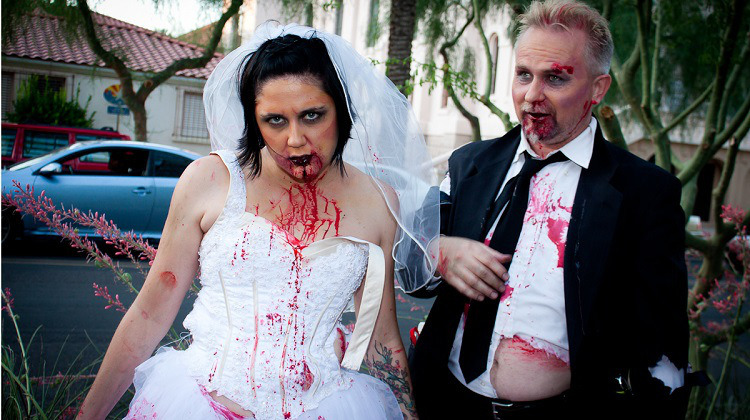
Once again I find myself walking into the murky waters of marriage, not in real life but in print… praise angels. I recently had a conversation about marriage with August Løvenskiolds which unearthed some alternative ways of looking at it. On several points our understanding aligned, and on others they diverged. So rather than rely on August’s perspective alone, I’d like to lay down my own thoughts.
The conversation was partly stimulated by a comment I made elsewhere, which we decided to unpack – and here I hope to unpack it further in this article (quote):
Aside from those differences over origins, both sides agree that gynocentric marriage – its culture, customs, laws, taboos – must be utterly abandoned, not reformed. Notice here I refer to gynocentric marriage and not to a marriage of the minds, hearts, dreams, goals, projects, and bodies that might come with non-gynocentric relationships.
The contention of this paragraph is, hypothetically speaking, that a marriage can be based on different priorities than those of gynocentrism. But before getting further into this idea lets start with the widest definition of marriage from the Oxford Dictionary, which is:
“any intimate association or union”
This definition covers pretty much all unions in which two or more things are brought together – whether in physics, biology, linguistics, or culture. In the case of this article we are referring to human unions, and while some of the accompanying customs and behavior go well beyond this basic Oxford definition, they each conform to this minimum requirement in order to satisfy for the label marriage.
There are two main orders of human union to consider: 1. culturally prescribed marriage customs, vs. 2. the unadorned biological demand for intimate association.
During our discussion, and also in his recent article on this topic, August proposed several combinations of words (portmanteaus) to describe many different kinds of marriage. For the sake of simplicity I’m only going to tackle the two primary terms he covered which are Gynomarriage, and Biomarriage.
Gynomarriage
Gynomarriage, (portmanteau of gynocentrism + marriage) describes the typical union between men and women today. It is based on the culturally prescribed roles of female superiority and male-chivalry, a combination more generally referred to as romantic love. This is our modern understanding of marriage.
During the time this marriage has existed, laws have evolved to buttress and enforce the gynocentric version, laws tilted almost exclusively to favor wives both during the marriage, and especially in the case of its downfall.
As a social construct gynomarriage has not been around forever, with other periods in history generating different forms of marriage as was outlined by August. During the last 800 years however, and ongoing today, gynomarriage has ruled; so that’s what we’ll concern ourselves with in this article. To better understand it let’s contrast it with another, far more important ‘marriage’ that remains relevant today:
Biomarriage
Biomarriage (biology + marriage) is a very different idea involving not cultural constructs, but biological necessities built into our DNA. The ‘marriage’ urged by biology is based on three factors: sexual pleasure; intimate bonding/attachment; and reproduction with the concomitant parenting instinct. 
Each of these imperatives has operated since our remote hominid past and will continue to compel our behavior for long after gynocentric culture ceases to exist. Like gynomarriage, biomarriage takes place between two adults, but in this case has done so for literally millions of years (and not just a few hundred years as in the case of gynomarriages).
I’ll spend the remainder of this piece talking about biomarriage because gynomarriage belongs, as any men’s advocate worth the name will tell you, in the scrap bin of history. People can easily get by without it, but the same cannot be said about biomarriage because the compulsion for human bonding, affection, and sexual desires are far too powerful to ignore.
Some MGTOW will refuse to consider a biomarriage with a woman, a serious but otherwise rational choice to make in an environment that exposes men to being savaged by the in-creep of gynocentric exploitation.
However, if a man refuses the possibility of a non-gynocentric relationship with a woman, what is required are, at bare minimum, alternative avenues for expressing his biological imperatives. He can satisfy sexual needs with porn, with fantasy, prostitutes, fleshlights or fuck-buddies. He can satisfy his attachment needs (at least partially) with close friends, family, or perhaps with a dog or some other pet. Likewise he can satisfy parental instincts via fathering, if the urge is there, the young among us — teaching school children, working in a daycare center, caring for the disabled, mentoring a fatherless child, coaching little league, looking after orphaned animals, or again buying a puppy.
Are these replacement measures enough? Yes, they meet the minimum standard for maintaining physical and emotional stability. But it requires a strong understanding of one’s biological needs, an awareness, and a willingness to work hard on meeting those needs. Rather than satisfying our biological needs via “an intimate association or union” we can use a bricolage of band-aids to ensure our biological and psychological health remains intact.
Summary
So while you may legitimately think you can reject, nay should reject gynomarriage, do not rush to reject the elements I’ve detailed under the heading biomarriage unless you want to risk your health, and life.
We need to realize that while history has been full of amazing men who never married and eschewed relationships with women (and no man should be shamed for taking this course), it also pays to remind men that choosing isolation from the opposite sex has a cost, and shouldn’t be viewed as something trivial to do to yourself. Loneliness can lead to depression, anxiety, paranoia, delusions, suicide and must be protected against. Most people can probably do it, but they’ll need more than video games and YouTube in the long run to pull it off. It’s going to involve things like meditation, consciously working to both acknowledge your urges, and to cater to them in creative ways.
We can employ alternatives to satisfy our biological urges, but we might also revisit the question of whether there’s a way to conduct a biomarriage with a real flesh-n-blood human being minus the gynocentrism; you could perhaps think of it as a biofriendship based on the more essential facts of human being. I’d like to think that’s possible, if not now then sometime in the future when both the government and gynocentrism are no longer part of the deal.
Feature image by Phoenix Comicon
On the nature of MGTOW self-determination
I make omelets my own way. By that, I mean exactly like you’d see in any cookbook. I whisk some eggs, melt some butter in a frying pan, pour the eggs in along with some cheese and maybe some other things for filling. What, you might ask, makes it my own way? The fact that it’s me doing it.
I also go my own way to work in the morning. The highway and during rush hour with thousands of other people. Each of them also going their own way. Why do I say I’m going my own way to work? Simply because it’s me doing it. Now you’d think that’s hardly my own way. If I were to go my own way to work, you’d think it would mean in some way fundamentally different – and you’d be right.
Like men going their own way.
If you were to imagine going out on your own, on your own way, you might expect that would mean something like MGTOW, that you are free from outside control, not dependent on another’s authority.
You might envision someone shrugging off society’s yolk, refusing to self-sacrifice and being one’s own boss. That’s what MGTOW is, even though a man certainly has the right to place himself in danger, to sacrifice himself for another, and to support others, he chooses not to. He goes his own way, in his life, in his choices, he remains sovereign.
Marriage is dangerous for men, it’s sacrificial and compels the man into support for his wife or ex-wife. In marriage, a man necessarily compromises, gives up sole control over his life and his property. As with the earliest known MGTOW groups “The Anti-Bardell Bachelor Band” it was acknowledged that MGTOW and marriage could not co-exist.
Now what about this concept of MGTOW simply meaning male self-determination? This is such a gross over-simplification as to completely change the concept. MGTOW can be better thought of as a second or third order male self-determination. That is, a man who is determined to maintain and preserve his self-determination and determined to refuse anything that might infringe on his future self-determinism.
For example, a man has the right, and could have his own self-determination to join the military, but joining the military greatly reduces a man’s self-determination. A soldier cannot go his own way. After he is no longer under military obligation, he could be MGTOW, yet while active, he no longer has his autonomy, independence and sovereignty. In the same way, a married man cannot be MGTOW.
Hopefully, I’ve already addressed possible rebuttals. Yes, men ought to have the maximum amount of choices, autonomy, freedom and options. Yet, the movement is not simply a group of men making choices from options they have. That understanding would not be recognizable to hardly anyone professing to be MGTOW. I won’t be appealing to the dictionary to say that MGTOW are by definition unmarried, but rather re-iterate that the philosophy and reason for existing preclude marriage, since MGTOW can be better understood as a second or third order self-determinism.
MGTOW is not simply about men making their own choices. It’s about making the choices that ensure further choices and maximum freedoms.
No man is under obligation to be MGTOW, but if you choose to sell yourself into government slavery (whether martial or marital), you are not MGTOW. If a man is married, he can be a great guy, he could live a great life, he could wake up sympathetic and with a desire to be MGTOW but he is not MGTOW. That’s how the movement understands itself, that’s what its philosophy prescribes and that’s simply what MGTOW is.
______________________________________
Editor’s note:
Just to be a little nitpicky here, I don’t agree with the claim that male self-determination “changes” the concept of MGTOW. It doesn’t, and the definition is correct. But I do agree that as we retain that definition it can be fleshed out in greater detail, which the above piece does by expanding it to cover both present and future self-determination. For example, the above rightly advises men not to place themselves in a legal contracted marriage accompanied by the illusion of a woman respecting of his self-determination now, but which in future can be stolen from that same man as a woman enacts the restrictive powers latent within the contract – hey presto, self-determination squashed by the State. Ditto joining the military.
Elsewhere I’ve fleshed out the definition by examination of the opposite of male self-determination, i.e., determination of self by other (DOSBO). Determination of self by others is the antonym already implied in the definition of self-determination. The antonym limits the definition of MGTOW and in one stroke negates the claim that MGTOW can mean anything a person wants it to mean. By applying the DOSBO rule, no person can qualify as a MGHOW if he hands over a significant amount of his sovereignty to another entity.
For example, on the face of it we might assume pro-feminist men are ‘self-determined’ for having made a choice to be led by the spirit and letter of feminism. It hardly needs saying that this amounts to a false claim. The only self-determined decision such men make is an initial one to give up self-determination altogether in favor of determination of self by other—which is, of course, the antithesis of self-determination and thereby disqualifies the MGTOW definition according to the DOSBO rule.
As a limiting principle, DOSBO delivers MGTOW from the meaninglessness of subjectivism, delivers it from the claim that MGTOW has no inherent meaning, or that it can mean whatever the hell a person wants it to mean. It gives a more detailed meaning (as Andrew also attempts in the article above) with real meta ideological commitments. – PW
A MGTOW Yardstick: Determination Of Self By Other (DOSBO)
In this piece I’ll be looking at the opposite of MGTOW, at what MGTOW isn’t, in order to throw MGTOW into relief against impostors. Naturally, this is my own take, one of numerous that abound on the Internet and one that comes with no special authority and no assumption that I speak for others.
By now many are familiar with the concept of male self-determination as a basic working definition for MGTOW. Self-determination is the practice whereby a man makes choices and decisions based on his own preferences and interests, monitors and regulates his own actions, and is generally self-directing.
Simple enough.
That leads to a consideration of the opposite of male self-determination, i.e., determination of self by other (DOSBO). Determination of self by other limits the definition of MGTOW and in one stroke negates the claim that MGTOW can mean anything a person wants it to mean. By applying the DOSBO rule, no person can qualify as a MGHOW if he hands over a significant amount of his sovereignty to another entity. Here are some examples illustrating DOSBO in action.
Example 1: Pro-feminist men
On the face of it, we might assume pro-feminist men are self-determined for having made a choice to be led by the spirit and letter of feminism. It hardly needs saying that this amounts to a false assumption.
The only self-determined decision such men make is an initial one to give up self-determination altogether in favor of determination of self by other—which is, of course, the antithesis of self-determination and thereby disqualifies MGTOW status for such men according to the DOSBO yardstick.
Example 2: Married men
This example is a bit trickier because it raises the question of whether the DOSBO factor is actual or merely potential for a particular married man.
The question to ask about such a man is this: Is he entering the marriage to willfully participate in a gynocentric charade? Sadly, the vast majority of men are doing precisely that, which indicates that the DOSBO factor is actual—such a man cannot qualify as MGTOW under this definition because he is ceding his self-determination to the will of women and the state.
Alternatively, if a man undertakes to symbolize his love through the ritual of marriage while at the same time assuming he’s rejecting the gynocentric aspect imposed by the state, can that man call himself a MGHOW while the DOSBO factor looms in potential due to his wife’s latent legal power? Is this man, rare as he may be, a MGHOW?
This is where I stop short of saying he absolutely cannot be—although I would certainly call him foolhardy if he entered a marriage while knowing the enormous risks involved. He is actually a MGHOW in behavior because he is temporarily “doing his own thing” with his wife’s momentary blessing, but he is potentially a man whose life can be determined by his wife and the government if she so chooses. While I look at what is actual instead of what is potential, I’m forced to conclude that he retains some semblance of a MGHOW.
Example 3: Traditionalists
Like marriage, traditionalism needs defining because not all traditionalism is the same—it is not all gynocentric. Traditionalism is a big basket of historical practices that may or may not be limiting of male self-determination. To simply say “All tradition is bad for men” is a blunt instrument that begs debunking. A better approach might be to ask, Which aspects of traditionalism are limiting to male freedoms?
“Traditional gender roles” is a more precise name for the problem, although it too suffers from lack of discrimination. Is it some traditional gender roles, most traditional gender roles, or all traditional gender roles that are bad? Was it bad for men to have the freedom to enjoy male-only fraternal organizations such as the Elks, Masons, Golden Fleece, and others,1 or was it oppressive for men to have male-only drinking saloons, pool halls, or sporting clubs? These too were the result of traditional gender divisions.
To use a more controversial example, was it limiting of male self-determination for a woman to stay home during the first two years after giving birth (not beyond!) to breast-feed while the husband worked? Or to take this further, is it limiting for a couple of today to employ the same traditional role division, but reversed, whereby the father stays at home and bottle-feeds a baby while the woman works full-time?
Are not some aspects of role-division benign?
While I leave the answer to these questions open, I’m going to suggest that a much more precise term than either “traditionalism” or “traditional gender roles” would be traditional gynocentrism. Gynocentrism is the main perpetrator in limiting male freedom, and for that reason it is more precise to finger the gynocentric thread of traditionalism.
Moving beyond subjectivism
As a limiting principle, DOSBO delivers MGTOW from the meaninglessness of subjectivism, delivers it from the claim that MGTOW has no inherent meaning, or that it can mean whatever the hell a person wants it to mean. It gives a precise meaning with real meta ideological commitments. Whether or not DOSBO proves of wider value is not important, but it will hopefully stimulate discussion about what precisely are the things that all MGTOW hold in common.
Notes
[1] Edward Ward, The Secret History of Clubs, published 1709. [This is one of hundreds of titles detailing traditional male clubs, guilds, and fraternities. The examples given show that the clubs were riotous places of laughter, male bonding, drinking, inventing and collaborating on various projects, and above all were places to enjoy a little self-chosen freedom. Married and bachelor men alike participated, and in the majority of clubs no women were allowed to set foot].
Feature image by James Cridland
Non-gynocentric relationships
Post-gynocentrism relationships between men and women are possible and desirable for many people. The following articles explore how relationships can be revisioned as intimate friendships. – PW
The other Beauty Myth
Sex and Attachment
Love and Friendship
On the marriage question
Pleasure-seeking vs. relationships
The Marriage Boycott
The following articles describe the increasing post-gynocentrism phenomenon of marriage shunning by males, and the rationale behind it. – PW

Marriage is a gynocentric custom
Slavery 101 – dating as taught to girls
Valentine’s Day: gynocentrism’s most holy event
Women complaining about lack of available slavemasters
Men not marrying
Men shouldn’t marry
Marriage is obsolete. Are women?
Men on strike: why men are boycotting marriage
Don’t give up on marriage? Request denied
Down the aisle again on the marriage question
Marriage is slavery
Modern marriage evolved from a historical ritual designed to indenture slaves to masters, though most people have forgotten its history. However, many of the behaviors and rituals central to this history can still be discerned in modern marriage.
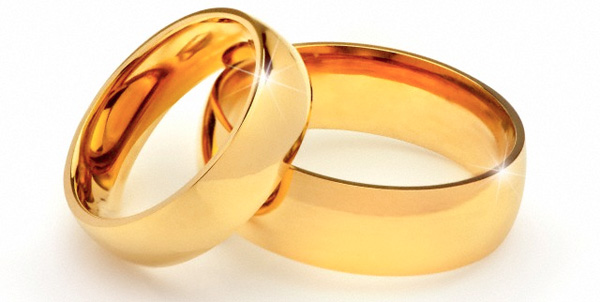 It’s thought that the practice of exchanging wedding rings extends far back into ancient history, with evidence of the ritual being found in Ancient Egypt, Rome, and within several religious cultures. However our modern-day practice of giving wedding rings has a very different origin and meaning, one which may make you, well, cringe a little. As suggested on the Society of Phineas blog, the ring functions as a feudalistic contract between the man and his wife:
It’s thought that the practice of exchanging wedding rings extends far back into ancient history, with evidence of the ritual being found in Ancient Egypt, Rome, and within several religious cultures. However our modern-day practice of giving wedding rings has a very different origin and meaning, one which may make you, well, cringe a little. As suggested on the Society of Phineas blog, the ring functions as a feudalistic contract between the man and his wife:
“The ring functions as a proof of ability in the supplicant vassal’s pledge to the wife. This is true given the traditional expectation of the amount of resources to be expended in purchasing the ring along with providing for the wedding day. In this gynocentric environment, it’s total sacrilege to not present a woman with her One Ring or to present one that is substandard to her or her friends. She uses her One Ring as a social proof of her status around Team Woman (it’s a competition much like Valentine’s Day gifts), as she will not hesitate to show it off as much as possible when she first gets it if it meets with her approval.” 1
This contention finds support from medievalist scholars who show the origin of our ring-exchanging ritual in early literary sources and artistic depictions of the Middle Ages. H.J. Chaytor, for instance wrote “The lover was formally installed as such by the lady, took an oath of fidelity to her and received a kiss to seal it, a ring or some other personal possession.” Professor Joan Kelly gives us a summary of the practice:
“A kiss (like the kiss of homage) sealed the pledge, rings were exchanged, and the knight entered the love service of his lady. Representing love along the lines of vassalage had several liberating implications for aristocratic women. Most fundamental, ideas of homage and mutuality entered the notion of heterosexual relations along with the idea of freedom. As symbolized on shields and other illustrations that place the knight in the ritual attitude of commendation, kneeling before his lady with his hands folded between hers, homage signified male service, not domination or subordination of the lady, and it signified fidelity, constancy in that service.” 2
 Like the description given by Kelly, men continue to go down on one knee and are quick to demonstrate humility by claiming the wedding is “her day”, betraying the origin and conception of marriage as more feudalistic in its structure than Christian. With gestures like these it’s obvious that modern marriage is based on the earlier feudalistic ritual known as a ‘commendation ceremony‘ whereby a bond between a lord and his fighting man (ie. his vassal) was created. The commendation ceremony is composed of two elements, one to perform the act of homage and the other an oath of fealty. For the Oath of fealty ceremony the vassal would place his hands on a Bible (as is still practiced) and swear he would never injure his overlord in any way and would remain faithful. Once the vassal had sworn the oath of fealty, the lord and vassal had a feudal relationship.
Like the description given by Kelly, men continue to go down on one knee and are quick to demonstrate humility by claiming the wedding is “her day”, betraying the origin and conception of marriage as more feudalistic in its structure than Christian. With gestures like these it’s obvious that modern marriage is based on the earlier feudalistic ritual known as a ‘commendation ceremony‘ whereby a bond between a lord and his fighting man (ie. his vassal) was created. The commendation ceremony is composed of two elements, one to perform the act of homage and the other an oath of fealty. For the Oath of fealty ceremony the vassal would place his hands on a Bible (as is still practiced) and swear he would never injure his overlord in any way and would remain faithful. Once the vassal had sworn the oath of fealty, the lord and vassal had a feudal relationship.
Because this archaic contract remains current in contemporary marriages, we might also question our typical concepts of obeyance between a husband and wife. In older Christian ceremonies the women sometimes vowed to love, cherish and “obey” her husband. However, because framed within a feudalistic-style relationship the woman’s obeyance was strongly offset and perhaps overturned in practice because she tended to be the dominant power-holder in relation to the man. In the latter case the wife as more powerful figure is merely obeying -if she is obeying anything at all- her responsibilities as a kindly overlord to her husband. Notice here that we have switched from the notion of a benevolent patriarchy to a kindly gynocentrism which feminists like to promote as loving, nurturing, peace-loving and egalitarian.
Love service
The Medieval model of service to a feudal lord was transferred wholesale into relationships as “love service” of men toward ladies. Such service is the hallmark of romantic love and is characterized by men’s deference to a woman who is viewed as a moral superior. During this period women were often referred to by men as domnia (dominant rank), midons (my lord), and later dame (honored authority) which terms each draw their root from the Latin dominus meaning “master,” or “owner,” particularly of slaves. Medieval language expert Peter Makin confirms that the men who used these terms must have been aware of what they were saying:
“William IX calls his lady midons, which I have translated as ‘my Lord’… These men knew their Latin and must have been aware of its origins and peculiarity; in fact it was clearly their collective emotions and expectations that drew what amounts to a metaphor from the area of lordship, just as it is the collective metaphor-making process that establishes ‘baby’ as a term for a girlfriend and that creates and transforms language constantly. In the same way, knowing that Dominus was the standard term for God, and that don, ‘lord’, was also used for God, they must also have felt some connection with religious adoration. 3
Recapitulation
Let’s recapitulate the practices associated with the ring-giving ritual of marriage:
1. Genuflection: man goes down on one knee to propose
2. Commendation token: rings exchanged
3. Vassal’s kiss: reenacted during the ceremony
4. Homage and fealty: implicit in marriage vows
5. Subservience: “It’s her special day”
6. Service: man prepares to work for wife for his whole life
7. Disposability: “I would die for you”.
Is it any wonder that women are so eager to get married and that men are rejecting marriage in droves? The feudalistic model reveals exactly what men are buying into via that little golden band – a life commitment to a woman culturally primed to act as our overlord. As more men become aware of this travesty they will choose to reject it, and for those still considering marriage I encourage you to read this article a second time; your ability to keep or lose your freedom depends upon it.
[1] Website: Society of Phineas
[2] Joan Kelly, Women, History, and Theory, University of Chicago Press, 1986
[3] Peter Makin, Provence and Pound, University of California Press, 1978
Did men pressure women into marriage?
By Anja Eriud and Peter Wright
One of the favourite myths of feminism is that ALL women were oppressed everywhere by ALL men – and that the mechanism by which men oppressed women was marriage.
Ah yes, in secret patriarchy meetings all over the known world scheming men got together to lay their nefarious plans to trap and enslave these innocent and delicate flowers of womanhood into the bonds, the cruel and tortuous chains of matrimony.
But, of course a few brave souls resisted, they struggled against this demonic plot to entrap and enslave them, then of course they wrote books about their “struggle”
According to received “wisdom” and in the context of anything that emanates from the mouths or pens of feminists one does use the word wisdom with a large dose of irony, this nefarious plot has been going on for centuries, nay millennium.
For the purposes of this essay we shall confine ourselves to a quick but focused examination of some specific periods, because after all, if feminists are correct, then like blindly putting a pin in a map with your eyes closed, wherever we landed in the timeline of human history we would reveal examples of this ongoing and nefarious patriarchal plot to enslave poor helpless damsels in the chains of matrimony. Makes sense, doesn’t it?
Let us begin with a gem of historical research that can be found at Gynocentrism and its Cultural Origins, and a campaign to impose a Bachelor Tax on those patriarchal sods who…….well were refusing to do their patriarchal duty and enslave some poor maiden into the chains of matrimony.
One Mrs Charlotte Smith in 1896, was so riled up and so aghast at the numbers of men who were refusing to get married that she started a campaign to force men to marry, and called upon public servants and officials to “do something” about this calumny against women.
“Mr’s Smith’s malignment of bachelors began with attacks on public servants and officials, saying that bachelors have always been failures, and that bachelor politicians, especially, were “narrow minded, selfish, egotistical, and cowardly.” She further claimed that, “It’s about time to organize antibachelor clubs in this state. It should be the purpose of every young woman to look up the record of each and every man who is looking for votes and, should his moral character be such would make him unfit for office, then his shortcoming should be the point of attack by the antibachelor women of Massachusetts.
There are 47,000 girls between the ages of 20 and 29 years in this state who cannot find husbands… [and] the bachelor politicians, they do not dare discuss the social evil question.”3 She states:
“No man can be a good, honorable and upright citizen who has not entered into the holy bonds of wedlock” [Charlotte Smith]4”
Now wait just a minute – that can’t be right – men are roaming the land in hordes, gathering together in secret patriarchy meetings, laying plans on how best to trap and enslave these fair maidens into marriage! Feminists have said so.
In her paper entitled, Sisterhood and Slavery: Transatlantic Antislavery and Women’s Rights, Karen Offen, Institute for Research on Women & Gender, Stanford University, takes a jaunt through history to justify the use of the word or analogy “slavery” as comparable to the status of women, especially married women from circa the 1650’s to 1848:
“In this paper, I extend the timeframe back some two hundred years from 1848 to the 1650s, providing evidence of the slavery-marriage analogy in published literary and political works by women and men (who deploy it in support of what can only be termed, retrospectively, a feminist politics). I will raise questions about exactly how we might interpret the feminist use of the slavery analogy as well as about how scholars and theorists have heretofore approached the separate subjects of women’s rights and slavery. “
Which is indeed what she does, now it must be said that Ms. Offen’s grasp of “history” is somewhat shaky, and she does take the long way around, via of course the usual suspects of “revisionist” and selective feminist history. Olympe De Gouges, John Stuart Mills, Elizabeth Cady Stanton – etc – with some rather unusual choices – Napoleon and Jean Jacques Rousseau, thrown in at odd moments. But, basically what this paper seeks to do, is what all feminists seek to do, is correlate the status of women historically with the status of slaves – black slaves – ergo she concludes with:
“The power of the slavery analogy, for feminists, was its insistence that women, and particularly women who married, were individuals in their own right, that they possessed “human rights” and free will and could not be legally disposed of like chattel or forced, even for family reasons, to do things against their will. The slavery analogy applied to marriage struck at the heart of institutionalized male domination in the family, and it continued to haunt the Western consciousness and to inspire subsequent generations of feminist action, both by women and by men well into the twentieth century, when in most countries the legal institution of marriage was totally (however reluctantly) restructured. It continues to characterize campaigns against sexual slavery into the twenty-first century.”
This is very odd, because you see men were presumably having secret patriarchy meetings, but not about what feminists seem to believe, and have hoodwinked millions of “womens studies” graduates about – nope, men were having meetings about fighting for the right NOT to be coerced into marriage by harridans like Charlotte Smith demanding that unmarried men be punished for NOT getting married.
In case you haven’t noticed, Ms. Offen’s paper covers the period from the 1650’s to 1848, a period during which women campaigned to have bachelors punished for refusing marriage. It is also a time in which we read of women having the legal liberty to choose for a husband any man who took her fancy, and if that man refused to marry her he was heavily fined according to the value of his possessions.
And less than 50 years later Mrs Charlotte Smith is getting her corsets in a kerfuffle over men not marrying, and how there are “47,000 girls between the ages of 20 and 29 years in this state who cannot find husbands” (the state she is referring to is Massachusetts). But, I believe I may be correct if I assert that Mrs Smith was probably not the only busybody, in the only state in 1896 America squawking about all those lonely and bereft “ladies” pining away for……………slavery – emmmmm – marriage.
Lets fast forward a bit in history and the period just after the first World War – the Great War it is called – though how one can call a war that claimed the lives of an estimated 10 million men great?
What was one of the major issues that exercised the minds of the public after this “War to end all wars”?
“Condemned to be virgins: The two million women robbed by the war:
They dreamt of love, marriage and children. But, as a new book reveals, the Great War robbed two million women of the men they would have married, leading many into relationships which could only be whispered about…”
The book referred to here is Singled Out: How Two Million Women Survived Without Men After The First World War by Virginia Nicholson (Viking, £20).
You will note of course that the emphasis is on the struggle of women to survive without men after the war, rather on the estimated 10 million MEN who didn’t actually SURVIVE the war.
“World War I was an extremely bloody war that engulfed Europe from 1914 to 1919, with huge losses of life and little ground lost or won. Fought mostly by soldiers in trenches, World War I saw an estimated 10 million military deaths and another 20 million wounded. While many hoped that World War I would be “the war to end all wars,” in actuality, the concluding peace treaty set the stage for World War II”
In fact the article cites some piteous and heartbreaking examples of the ”struggles” of these sad and lonely maidens and what they are prepared to do in order to enslave themselves:
“Many placed advertisements in the Press in their hope of finding any man – like the following heartfelt plea published during the war: “Lady, fiancè killed, will gladly marry officer totally blinded or otherwise incapacitated by the War.”
By 1921 publications like the Matrimonial Times were carrying columns of advertisements placed by spinsters and widows.
They included:
MATRIMONY – Spinster, 38, loving disposition, fond of children, entertaining and country life, is anxious to correspond with a wounded officer of cultured tastes, with view to a matrimonial alliance; one with some means.
LADY, aged 49, spinster, cultured, bright temperament, small capital… would like to meet officer or civilian age 45-60… could be very happy with disabled officer needing a cheerful companion and pal.”
Couple of things to note here, while there were an estimated 10 million men killed in WWI, there were a further 20 million men injured, need I say that those 20 million injured men did not have the benefit of the kinds of medical technological marvels available to us today? So, being “injured” carried an extra dimension of horror and anguish for these men.
Now take a closer look at the extracts from the letters cited in the article, “…will gladly marry officer totally blinded or otherwise incapacitated by the War” – “….anxious to correspond with a wounded officer of cultured tastes, with view to a matrimonial alliance; one with some means” – “…..could be very happy with disabled officer needing a cheerful companion and pal”
Even when women were prepared to “settle” in a desperate attempt to “get married” there were conditions – the ladies preferred their men –injured or not, disabled or not, to be of a certain status, to be the “right class” to be “Officers” – Hypergamy anyone? Gynocentrism?
This was such a burning issue that the government stepped in, to ease and attempt to resolve the plight of these “surplus women”
“In 1919, the Society for the Oversea Settlement of British Women was established and was provided with an annual grant. The Society’s panels included ones for areas – Africa, Canada, Australia and New Zealand – and for work – for nursing, for training and for agriculture. All of this effort was in spite of the evidence collected by the Dominions Royal Commission of 1912-1917 which found that the casualties of men from the dominions during the war meant that marriage prospects in the Empire had also declined. Additionally, men were emigrating as well as women, perpetuating the imbalance in Britain. So in 1920, 125,000 women emigrated but 115,000 men also did. Between 1923 and 1927, fewer women than men emigrated as a result of the Empire Settlement Act (1922), through which the government provided financial assistance to emigrants.”
As you can see, it kind of backfired – but – hurrah for the attempt, to provide a means to give women what they wanted – enslavement in marriage.
So, here we are in the 21st century and has anything changed?
Well yes, and no – according to feminists men are still patriarchal bastards roaming the land trying to trap innocent virgins into the chains of matrimony – except:
“Among pre-adults, women are the first sex. They graduate from college in greater numbers (among Americans ages 25 to 34, 34% of women now have a bachelor’s degree but just 27% of men), and they have higher GPAs. As most professors tell it, they also have more confidence and drive. These strengths carry women through their 20s, when they are more likely than men to be in grad school and making strides in the workplace. In a number of cities, they are even out-earning their brothers and boyfriends.
Still, for these women, one key question won’t go away: Where have the good men gone?”
Perhaps the attitude toward men in the following might give all those lonely and pining fair maidens, yearning to get shackled up, an insight as to where all the good men have scarpered to?
“Single men have never been civilization’s most responsible actors; they continue to be more troubled and less successful than men who deliberately choose to become husbands and fathers. So we can be disgusted if some of them continue to live in rooms decorated with “Star Wars” posters and crushed beer cans and to treat women like disposable estrogen toys, but we shouldn’t be surprised.”
Because after all, as the redoubtable Mrs Charlotte Smith also claimed so vehemently all those years ago:
“No man can be a good, honorable and upright citizen who has not entered into the holy bonds of wedlock”
Like Ludwig Von Beethoven, Henry David Thoreau, Isaac Newton? Those kinds of dishonorable and presumably irresponsible men who wasted their lives away without the civilising influence of women!
1896: Mrs. Charlotte Smith proposes a “Bachelor Tax”
In the 1890’s a proposed ‘tax on bachelors’ caused the very first MGTOW (Men Going Their Own Way) and Men’s Rights group to form.1 At that time a group of bachelors banded together in response to the tax and to fight for their freedom from gynocentric slavery. They can also be considered the first Men’s Rights group to fight against patently misandric laws.
Background
 In 1896 a Mrs. Charlotte Smith, feminist activist and President of the Women’s Rescue League, spearheaded an anti-bachelor campaign based on her concerns about the increasing numbers of women who could not find husbands — a surprising development considering men outnumbered women in the United States then by 1.5 million.2 Her solution to the “problem” was to denigrate, malign, and ultimately punish bachelors in order to pressure them into marrying any women unlucky enough to remain unwed.
In 1896 a Mrs. Charlotte Smith, feminist activist and President of the Women’s Rescue League, spearheaded an anti-bachelor campaign based on her concerns about the increasing numbers of women who could not find husbands — a surprising development considering men outnumbered women in the United States then by 1.5 million.2 Her solution to the “problem” was to denigrate, malign, and ultimately punish bachelors in order to pressure them into marrying any women unlucky enough to remain unwed.
Mr’s Smith’s malignment of bachelors began with attacks on public servants and officials, saying that bachelors have always been failures, and that bachelor politicians, especially, were “narrow minded, selfish, egotistical, and cowardly.” She further claimed that, “It’s about time to organize antibachelor clubs in this state. It should be the purpose of every young woman to look up the record of each and every man who is looking for votes and, should his moral character be such would make him unfit for office, then his shortcoming should be the point of attack by the antibachelor women of Massachusetts. There are 47,000 girls between the ages of 20 and 29 years in this state who cannot find husbands… [and] the bachelor politicians, they do not dare discuss the social evil question.”3 She states:

Part of her remedy was to have bachelors excluded from employment in prominent public sector positions. Her second punishment proposed a universal bachelor tax of $10 per year be applied,5 amounting to between 1-4 weeks of the average wage, with the proceeds to provide living standards for ‘unmarried maidens’ orphans and the poor. In 1911, Mrs. Smith was still spruiking the tax on bachelors, claiming statistics showed that 60% of eligible men in Massachusetts never married, especially men of “small means” because “in order to be popular at the club now it is necessary for a man to have one or two automobiles a yacht, and two or three mistresses, but no marriage.”6
Many proponents of the tax believed that it would encourage marriage and thereby reduce the state’s burden to care for those who did not financially support themselves. Perhaps most importantly Mrs. Smith felt that the tax would lower the number of men “who go around making love to young girls.”6
The bachelor band of 1898
The bachelor tax proposed by Smith was by no means the first. For example, in 1827 a “highly numerous and respectable” group of men met in a New York City hotel to organize a protest against a bill before the New York legislature that replaced a current tax on dogs with one on bachelors. The bill, they claimed, was “onerous and in direct violation of the great charter of their liberties.”7
In 1854, in Connecticut a legislator argued in the House of Representatives against a proposed bill to tax bachelors: such a bill was unnecessary, he claimed, because “There was a tax laid already upon a goose, and any man who had lived 25 years without being married could be taxed under that section.”8 These two bills were not unique, as bachelor taxes have existed around the globe and throughout the millennia, dating back at least to ancient Greece and Rome.9
The culmination of attacks on both the finances and character of bachelors resulted (in 1898) in the formation of a small resistance group in Atlanta Georgia, known variously as the Bachelor Band, The Bachelor League, or famously the ‘Anti-Bardell Bachelor Band.’
The latter takes its name from the case of Bardell vs Pickwick in Charles Dickins 1836 classic novel The Pickwick Papers in which the character Mr. Pickwick is forced to defend himself against a corrupt lawsuit brought by his landlady, Mrs. Bardell, who is suing him for breach of promise, and which ultimately results in his incarceration at Fleet Prison for his stubborn refusal to pay the compensation to her. Thus ‘Anti-Bardell’ in the title refers to men’s struggle against corruption, greed and bigotry, with the bachelor band publicly claiming that “One of its main objects is the suppression of Mrs. Bardell’s large army of female followers today.”10
The Bachelor Band undertook political activism on behalf of men’s rights, including articles in numerous mainstream newspapers, letters to politicians, and public petitions to raise both awareness and support for men against misandric laws and practices. In response to Mrs. Smith’s campaign for what she termed “compulsory marriage,” the Bachelor Band held an emergency meeting chaired by Al Mather, a prominent real-estate dealer.
At the meeting a member cried out, “We are pledged to celibacy, and we must remain true to our resolve!” Another member, Henry Miller stated “It is an outrage to attempt a tax on bachelors. The next thing, I suppose, will be to put tags on us or make us get out licenses as is now requires for dogs.”11 The meeting then moved into a secret session where the proposed bachelor tax was discussed, with attendees concluding that is was not the tax per-se that was the problem, but the spirit of the thing. The members, one and all, declared the tax was an attempt to place bachelors under a ban, and by doing so force them into matrimony. With all members of the same opinion a resolution was passed as follows:
“We hereby ask and request that the Senator and the Assemblymen from this district, namely Mr. Daly, Allen, and marshal exert themselves to the best of their ability and means to defeat the bill now before the Legislature to tax bachelors; and it is further resolved that the Secretary be authorized to forward a copy of the above resolution to each of the gentlemen mentioned, and further to notify the proposer of the bill, Assemblyman Weller, and the governor of our action.”11
Another group, the Hoboken Bachelor Club, discussed the merits of drafting a petition protesting against the bill and circulating it for signatures. As can be seen from the political action taken, the assault on men was not going to be taken lying down, with the bachelors forming a resistance movement headed by Lawyer John A. Hynds who not only resisted pressure to marry but challenged the bachelor tax and the cultural misandry that accompanied it. According to one media account the bachelor group was still active four years after the date of the above controversy, making it a successful long-term organisation.12
One of the more humorous, but effective examples of the group’s media activism was this piece in the New York World:
BACHELOR’S LEAGUE AGAINST THE FAIR
Twelve bachelors have formed a league against marriage under the name of the “Anti-Bardell Bachelor Band,” a name which recalls the woes of Mr. Pickwick, of immortal fame. The motto of the club is Solomon’s proverb: “It is better to live in a corner of the housetop than with a brawling woman in a wide house.” The objects of the club are to oppose matrimony, to fight for the liberty of man, to encourage the manufacture of all such devices as bachelor buttons and to check the movement inaugurated by Mrs. Charlotte Smith “and other disgruntled females” to require bachelors to wed.
Any member who marries will be fined $1000. The club will attend the “funeral” in a body dressed in black, wearing long, mournful faces, with an abundant supply of crepe. In addition to this they will emit groans during the whole ceremony. When the fine is paid the member shall be declared legally dead.
Another offense is “getting the mitten.” If a member is “mittened” by a widow or old maid the fine is doubled. Among other offenses are calling a woman “sweetheart,” “dearest,” “sugar lump,” “dovie,” “tootsie-wootsie,” “honey,” “lamb” or any such kindred nonsensical, absurd and disgraceful terms, and “walking with the female in the moonlight, speaking of the stars or the weather, quoting poetry –original or otherwise- riding through a tunnel in a car when any female occupies a contiguous seat, getting down on his knees before or at the side of a woman, carrying a girl’s picture in his watch, hat or pocketbook, staying later than 12 o’clock at night, sending cologne, cinnamon drops or other kinds of perfumed liquids or shopping in a dry-goods store with any one of the fair sex.”
The chief officers of the club are: John A. Hynds, chief marble heart; E. C. Brown, junior marble heart; Mark J. McCord, freezer; J. D. Allen, iceberg.
Mr. E. C. Brown, the junior marble heart, was tried recently on the charge of deserting the Atlanta charmers and visiting a Marietta widow and sending the widow flowers and candles. He was forbidden to visit Marietta for two months and fined twenty-four theatre tickets.13
Penalties against bachelors as enticements to marry are seen as far back as classical Roman times and, as with Eliza and Mariana who in 1707 AD proposed harsh penalties for unwed men, women are the most passionate advocates of bachelor punishments.
The Anti-Bardell Bachelor Band represents possibly the earliest MGTOW and MHRA group we know of, with men fighting for the basic right to determine their own lives and liberty, including the right to not marry. The stacked deck against men is not new, nor is an organized reaction to it. The only thing these poor chaps needed was the internet, and a mind for rebellion. With this in mind let’s make sure we milk the internet for all we can squeeze out of it… it’s our best chance yet.
Notes
[1] Specifically, the earliest MGTOW and Men’s Rights groups currently known by this author. If an earlier MGTOW or MR group is brought to my attention this page will be updated accordingly.
[2] The Crusade Against Bachelors, The Norfolk Virginian. (Norfolk, Va.), 02 Sept. 1897.
[3] Antibachelor Clubs: Mr’s Charlotte Smith Starts New Political Crusade, Rock Island Argus. (Rock Island, Ill.), 28 Aug. 1897
[4] No offices for Bachelors, Kansas City StarThursday, August 19, 1897, Kansas City, Kansas
[5] Massachusetts Bachelors Taxed $10 a Year, The Salt Lake herald. (Salt Lake City [Utah), 01 March 1898
[6] Tax on Bachelors, Boston Globe, Feb.15, 1911, 1. (Smith was also campaigning against women riding bicycles, which she considered immoral).
[7] Editorial, Connecticut Courant, February 5, 1827
[8] Connecticut Legislature, Senate, House of Representatives, Hartford Courant, June 26, 1854
[9] Taxing Bachelors in America: 1895-1939, by Marjorie E. Kornhauser
[10] Evening star, February 15, 1898, Page 13, Image 13
[11] Bachelor Tax Feb 12 1898 New York World
[12] The Times 19 January 1902 › Page 4, “Allison Mather, former president of the Hoboken Bachelors’ Club, and who for many years was proud of the distinction or being a confirmed woman hater, is suing for divorce. When he married last year the members of the club went into mourning.”
[13] New York World, 1898 [Note: “mittened” or “getting the mitten” is an old-time New England expression, meaning to have your offer of marriage rejected by your “best girl,” and has an origin in the customs of the earlier days. Two hundred years ago, gloves were unknown in the country towns, and mittens were knitted and worn in all families. If a young man, going home from singing school with the girl of his choice, was holding her mittened hand to keep it from getting cold, and took that opportunity to urge his suit, if the offer proved acceptable, the hand would remain; if taken by surprise, an effort to withdraw the hand would leave the mitten. So the suitor would “get the mitten, but would not get the hand.”
Forget the ring
Modern marriage evolved from a historical ritual designed to indenture subordinates to their masters, though most people have forgotten this history. However, many of the behaviors and rituals central to this history can still be discerned in modern marriage.
It’s thought that the practice of exchanging wedding rings extends far back into ancient history, with evidence of the ritual being found in Ancient Egypt, Rome, and within several religious cultures. However our modern-day practice of giving wedding rings has a very different origin and meaning, one which may make you, well, cringe a little. As suggested on the Society of Phineas blog, the ring functions as a feudalistic contract between the man and his wife:
“The ring functions as a proof of ability in the supplicant vassal’s pledge to the wife. This is true given the traditional expectation of the amount of resources to be expended in purchasing the ring along with providing for the wedding day. In this gynocentric environment, it’s total sacrilege to not present a woman with her One Ring or to present one that is substandard to her or her friends. She uses her One Ring as a social proof of her status around Team Woman (it’s a competition much like Valentine’s Day gifts), as she will not hesitate to show it off as much as possible when she first gets it if it meets with her approval.” 1
This contention finds support from medievalist scholars who show the origin of our ring-exchanging ritual is found in early literary sources and depictions of the Middle Ages. H.J. Chaytor, for instance wrote “The lover was formally installed as such by the lady, took an oath of fidelity to her and received a kiss to seal it, a ring or some other personal possession.” Professor Joan Kelly gives us a tidy summary of the practice:
“A kiss (like the kiss of homage) sealed the pledge, rings were exchanged, and the knight entered the love service of his lady. Representing love along the lines of vassalage had several liberating implications for aristocratic women. Most fundamental, ideas of homage and mutuality entered the notion of heterosexual relations along with the idea of freedom. As symbolized on shields and other illustrations that place the knight in the ritual attitude of commendation, kneeling before his lady with his hands folded between hers, homage signified male service, not domination or subordination of the lady, and it signified fidelity, constancy in that service.” 2
Like the description given by Kelly, men continue to go down on one knee and are quick to demonstrate humility by claiming the wedding is “her day”, betraying the origin and conception of marriage as more feudalistic in its structure than Christian. With gestures like these it’s clear that modern marriage is based on the earlier feudalistic ritual known as a ‘commendation ceremony’ whereby a bond between a lord and his fighting man (ie. his vassal) was created. The commendation ceremony is composed of two elements, one to perform the act of homage and the other an oath of fealty. For the Oath of fealty ceremony the vassal would place his hands on a Bible (as is still practiced) and swear he would never injure his overlord in any way and would remain faithful. Once the vassal had sworn the oath of fealty, the lord and vassal had a feudal relationship.
Because this archaic contract remains current in contemporary marriages, we might also question our typical concepts of obeyance between a husband and wife. In older Christian ceremonies the women sometimes vowed to love, cherish and “obey” her husband. However, because framed within a feudalistic-style relationship the woman’s obeyance was strongly offset and perhaps overturned whereby in practice she tended to be the dominant power-holder in relation to the man. In the latter case the wife as more powerful figure is merely obeying -if she is obeying anything at all- her responsibilities as a kindly overlord to her husband. Notice here that we have switched from the notion of a benevolent patriarchy to a kindly gynocentrism which feminists like to promote as loving, nurturing, peace-loving and egalitarian.
Love service
The Medieval model of service to a feudal lord was transferred wholesale into relationships as “love service” of men toward ladies. Such service is the hallmark of romantic love and is characterized by men’s deference to a woman who is viewed as a moral superior. During this period women were often referred to by men as domnia (dominant rank), midons (my lord), and later dame (honored authority) which terms each draw their root from the Latin dominus meaning “master,” or “owner,” particularly of slaves. Medieval language expert Peter Makin confirms that the men who used these terms must have been aware of what they were saying:
“William IX calls his lady midons, which I have translated as ‘my Lord’… These men knew their Latin and must have been aware of its origins and peculiarity; in fact it was clearly their collective emotions and expectations that drew what amounts to a metaphor from the area of lordship, just as it is the collective metaphor-making process that establishes ‘baby’ as a term for a girlfriend and that creates and transforms language constantly. In the same way, knowing that Dominus was the standard term for God, and that don, ‘lord’, was also used for God, they must also have felt some connection with religious adoration. 3
Recapitulation
Let’s recapitulate the practices associated with the ring-giving ritual of marriage:
1. Genuflection: man goes down on one knee to propose
2. Commendation token: rings exchanged
3. Vassal’s kiss: reenacted during the ceremony
4. Homage and fealty: implicit in marriage vows
5. Subservience: “It’s her special day”
6. Service: man prepares to work for wife for his whole life
7. Disposability: “I would die for you”.
Is it any wonder that women are so eager to get married and that men are rejecting marriage in droves? The feudalistic model reveals exactly what men are buying into via that little golden band – a life commitment to a woman culturally primed to act as our overlord. As more men become aware of this travesty they will choose to reject it, and for those still considering marriage I encourage you to read this article a second time; your ability to keep or lose your freedom depends upon it.
[1] Website: Society of Phineas
[2] Joan Kelly, Women, History, and Theory, University of Chicago Press, 1986
[3] Peter Makin, Provence and Pound, University of California Press, 1978
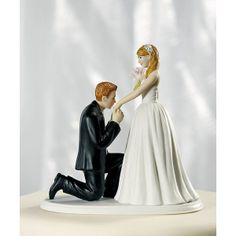
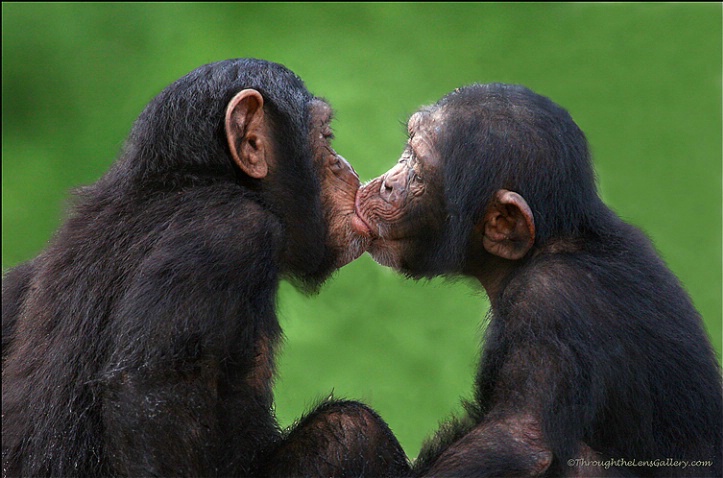



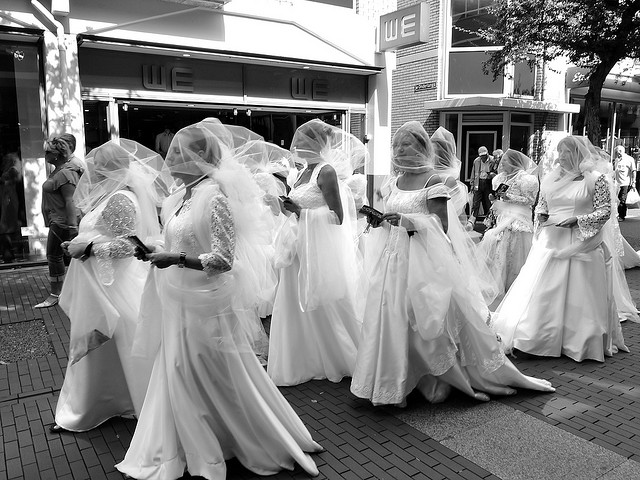
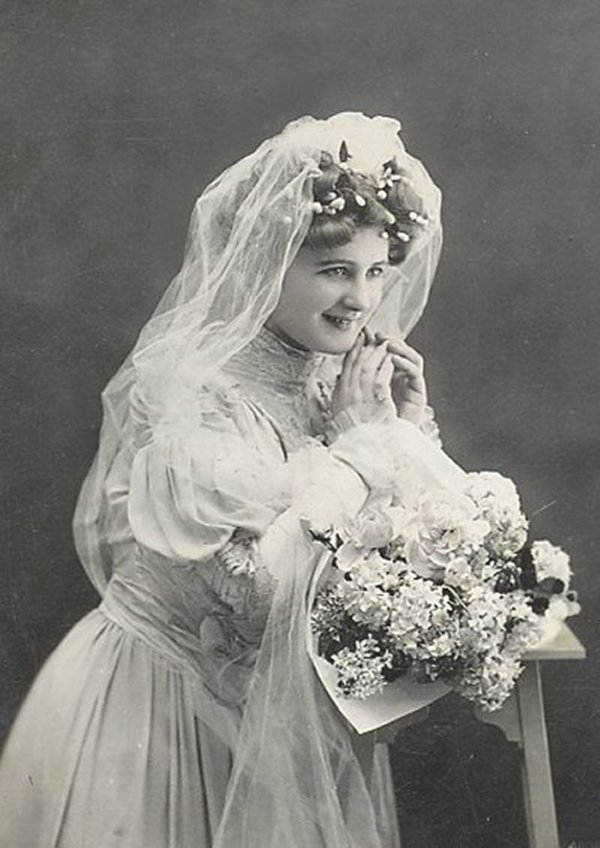
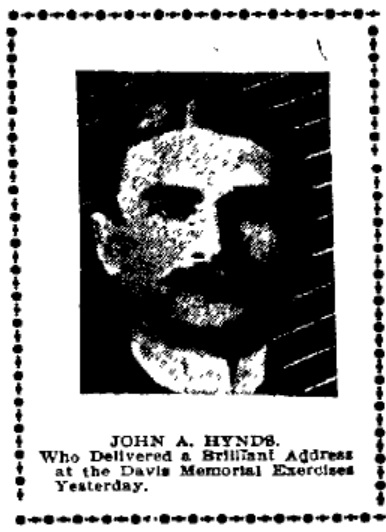

You must be logged in to post a comment.